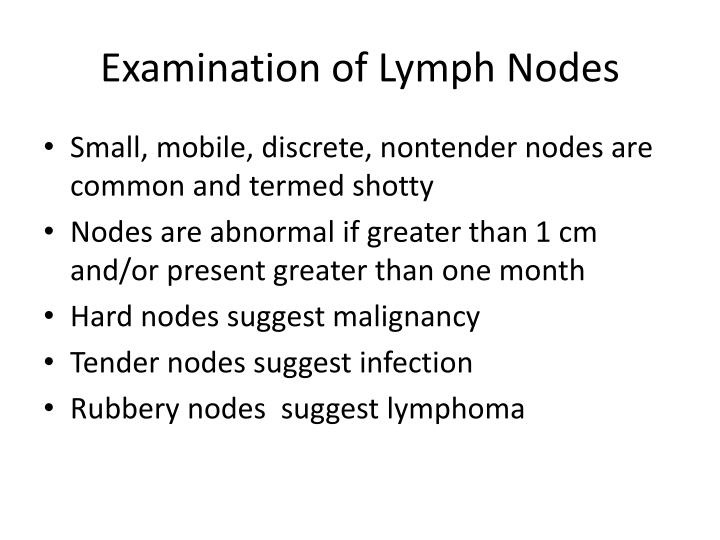
Other risk factors include tobacco use, UV radiation exposure, occupational history of mining, masonry, metal work (beryllium or silicon exposure), and family history (Li-Fraumeni syndrome or lipid storage disease) should be asked during the history taking.Ĭhronic use of medications can contribute to cases of unexplained lymphadenopathy. Infectious exposure and immunization status should be reconciled. Copyright © 2016 American Academy of Family Physicians.Įnvironmental, travel, insect, and animal exposure should always be accounted for during evaluation. Unexplained Lymphadenopathy: Evaluation and Differential Diagnosis. Some important things to always ask about are how long the lymphadenopathy has been present, exposures, where the lymphadenopathy is located, and associated symptoms such as fever, night sweats, sore throat, nausea, vomiting, abdominal pain, unintended weight loss, high-risk sexual behaviors, exposure to any new animals, recent travel, joint pain, rash, or muscles soreness. Often, the history and examination will aid in the identification of the reason for lymph node enlargement. Just like every patient, start off with an appropriate history and physical examination. Copyright © 2016 American Academy of Family Physicians. Malignancy, infection, autoimmune disease, miscellaneous causes, and iatrogenic causes. 1Ĭauses of lymphadenopathy can be remembered by the mnemonic, MIAMI.

In around 4 percent of patients 40 years and older, cancer is found to be the underlying cause, whereas if under 40 years of age, around 0.4% of cases are found to be due to malignant etiologies. 1 Age is a risk factor for unexplained lymphadenopathy being related to cancer. However, only around 1.1 percent of these instances are caused by malignancy. In around 0.6 percent of cases of lymphadenopathy, the etiology remains unknown.

However, there are some additional circumstances where small lymph nodes should attract some concern, such as if lymphadenopathy is seen in the supraclavicular, popliteal, iliac, and epitrochlear regions that are greater than 5 mm in size. Lymphadenopathy is considered to be abnormal if the size is greater than 1 centimeter or if there is an abnormal consistency (such as being matted, fixed, or hard). Today we will discuss etiologies, an approach to diagnosis, and potential treatment based on specific etiologies of lymphadenopathy. Numerous etiologies can present with lymphadenopathy, and the workup can be extensive. Lymph nodes here are normal up to 1.Enlarged lymph nodes can be a robust chief complaint to tackle.Palpate horizontal chain (inferior and parallel to inguinal ligament) and vertical chain (alongside terminal great saphenous vein).Use your right thumb to feel for lymph nodes. To examine the right: hold the patient’s right wrist with your left hand and their right elbow in your right palm.It helps if you bring the patient’s elbow closer to their chest at this point. NB: to feel the medial lymph node group, you really have to push your hand high up into the axilla and press it firmly medially, rolling the nodes across the ribs with all your fingers.

Palpate the apical, lateral, medial, anterior and posterior lymph node groups by firmly pressing the soft tissues and rolling them over the underlying harder tissues.Now place your left arm over your right and place your left hand into the patient’s axilla.To examine the right: ask the patient to hold your right biceps muscle while you support the weight of their right arm at the elbow with your right hand.


 0 kommentar(er)
0 kommentar(er)
